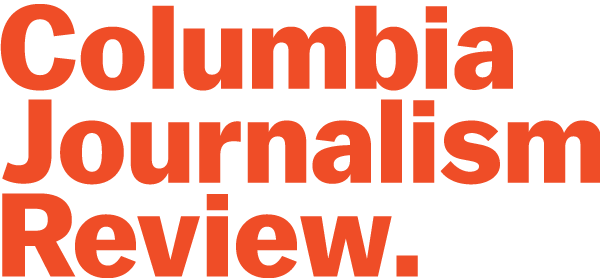Sign up for the daily CJR newsletter.
Last month, thirty-five of Outside magazine’s contributing editors, writers, and photographers signed an open letter to Outside Inc. requesting that their names be removed from the magazine’s masthead. “Despite the vast sums of money you have raised to consolidate the adventure media industry,” the letter read, “your company now seems intent on destroying what Outside once stood for: bold, spirited journalism.” The letter cited recent layoffs of nearly half the editorial staff, internal pressure to avoid topics construed as political, and a general shift away from the longform and investigative storytelling for which the magazine has been known. (Outside Inc. leadership contests all of these characterizations.) Among the signatories were Jimmy Chin, the Oscar-winning filmmaker; E. Jean Carroll, a prolific journalist and contributor to Outside; and Tim Cahill, who cofounded the magazine nearly fifty years ago. Many hadn’t written for the magazine in years, but the request signaled their will to distance themselves from what Outside had become.
The current iteration of Outside started in 2021, when Robin Thurston, a tech entrepreneur who was then the CEO of Pocket Outdoor Media, acquired it, adding the magazine to his portfolio of outdoor outlets and tech brands. He soon changed the parent company’s name to Outside Inc. At the time, Outside had more than thirty editorial staffers and, according to staffers at the time, seemed to be financially stable, at least by magazine industry standards. (A spokesperson for Outside Inc. disputes this, saying the magazine was in significant debt and losing money.) But by a tech company’s definition, it could not be considered a success: there was no sign of exponential growth. “To hit Thurston’s goal numbers, the core of the business—the media brands—would have to transform from slow-growing, audience-driven outlets into high-growth machines,” wrote Caley Fretz, a former editor of cycling tips at Outside Inc.
Outside Inc. raised VC funds and acquired yet more titles and tech, spanning not only the outdoor adventure world but also fitness, including as Oxygen. The company still relied heavily on advertisements and funneling its audience to proprietary apps and products; it also added soft paywalls, covering 30 percent of each digital magazine. In the first fourteen months, the company boasted that it had quadrupled its paid membership to more than eight hundred thousand subscribers across its magazines. “At first, I was actually a little bit hopeful,” said Marc Peruzzi, a letter signatory who has also been a contributing editor to Outside since 1999. “They were going to try to package everything on a subscription basis—apps, map apps, and other items—to hopefully make it a little more enticing for people to pay for it. But shortly after they took over, they just started whacking editors and freelancers, and the content went downhill pretty quickly.”
One former employee told me that, as early as 2022, staff were told that certain topics were considered “no-fly zones,” meaning they were too politically sensitive to cover. Another former staffer, who spoke on the condition of anonymity owing to a nondisparagement agreement, said a company leader at one point highlighted the magazine’s coverage of Charles Barrett, a renowned climber and author who was recently sentenced to life in prison for rape, as the kind of thing “we want to be doing less of.” Last fall, the former staffer added, reporters were told that any stories about politics would need additional layers of oversight. “Things would get held up in no-man’s-land waiting for approval from higher-ups or things would get defanged in a really profound way,” they said. (“Leadership has not directed our reporters to avoid all political or investigative stories,” a spokesperson from Outside told me. “We believe tough, well-researched journalism remains an essential part of what we do, and we’re committed to publishing stories that reflect the complexities of the outdoor world and timely current events.”)
In 2022, as the staff considered unionizing, Outside Inc. closed three of its magazines and announced layoffs affecting more than 15 percent of the company, including Fretz. Executives also launched an NFT marketplace—including an optimistic string of Outside NFTs—that folded within a year. “The winds of change shifted in WEB3, and we were not able to achieve our vision, but we remain committed to finding innovative ways to leverage technology to make a better world,” the Outside.io website now reads. February of this year marked the latest in Outside Inc.’s layoffs: twenty-three people from Outside were let go, eleven of them from the editorial team; the number of print editions dropped from six per year to four. The news came with an announcement that Outside Inc. had just absorbed more companies, including Inntopia, a travel booking software.
A spokesperson from Outside Inc. told me that there are now sixty-five editorial staff members working across all the magazines. In total, the company has acquired forty-three entities—editorial, tech, and e-commerce firms—all of them under Outside’s banner. Of those, the company has closed three, and almost all have downsized their print products. The remaining titles span a wide audience—from Vegetarian Times to SKI. Subscribers can access these publications via Outside+, a social media platform aimed at sharing digital metrics from physical activities, mapping apps, article links, and user-generated content. “It’s in a nascent stage, but we are rapidly building social feedback loop tools,” Heather Dietrick, Outside Inc.’s chief media officer, told me. Her team is modeling its strategy on the New York Times’ approach to games and cooking, she said; at Outside Inc. they’re focused on adventure, fitness, and booking platforms. Outside still has journalism at its core, she said, “but there’s a real symbiosis there that I think makes for a very healthy self-sustaining media business.”
Thurston responded to the letter the same day it was sent, thanking those who signed for sharing their opinions. “I understand that not everyone will agree on our business strategy,” he wrote, in a message shared with CJR, citing the “headwinds of change” in the media industry. In response to concerns that political and investigative reporting were being suppressed, he attached the company’s editorial guidelines, which state that Outside Inc. encourages professional political opinion work that is related to outdoor spaces. He agreed to immediately remove the names of disgruntled contributors.
The headwinds of change aren’t unique to Outside Inc., of course. Many magazines have struggled to keep up with shifting ad markets and audience habits, doing what they need to survive. Sports Illustrated explored AI-generated content, National Geographic laid off staff in favor of (cheaper) freelancers, Los Angeles magazine tipped toward the advertorial, and many have reduced or closed print editions. “They’re doing it because they’re trying to survive, and I feel a fair amount of empathy for that situation,” Fretz said. “But I don’t have much empathy for the decision to build a tech company on top of a dozen different print magazines.” And even as Outside becomes diminished in stature, he noted, “they will be able to trade on Outside’s brand for a very long time.”
Thurston’s use of the word “content” in his reply—“we are working to build a viable, healthy business that supports the content our audience loves”—stood out, suggesting that he views magazine writing as leverage to sell a product, Peruzzi told me, not journalism with value of its own. Thurston referred me to Dietrick, who said the distinction doesn’t mean much. “I don’t know, is there a difference?” she said. “Content is a more expansive word, and journalism fits in there.” The company has no plans to reduce coverage, she said, pointing to half a dozen articles about the Trump administration’s assault on national parks.
Still, Outside’s mission means something different to its former contributors and employees, many of whom expressed admiration and concern for the remaining editorial staff. “It’s not just about aggregating content or whatever the lingo,” Katie Arnold—a signatory of the letter who was the managing editor of Outside from 1995 to 2006, and stayed on as a contributor for many years—told me. “It was about making good stories and reporting them well, with care for facts and nuance. How could that possibly continue with so few people left?”
Editor’s Note: This article has been updated to reflect Outside Inc.’s perspective on the magazine’s financial state at the time of acquisition.
Has America ever needed a media defender more than now? Help us by joining CJR today.







